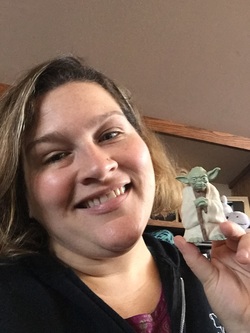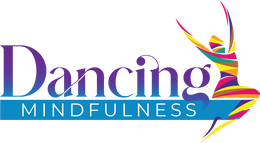 People who know me well can tell you that Master Yoda is my favorite character in the Star Wars universe. I've long looked to Master Yoda as a sage guide, a sponsor, in my own recovery journey where the force has long resonated as a form of Higher Power for me. In my development as a professional counselor, I also turned to Yoda as a role model. As a sponsor, a therapist, a teacher, a yogi, and a practitioner of mindfulness, his wisdom never fails to speak truth to my soul. While all of his "one liners" are excellent candidates as recovery slogans, I was prompted to choose one that most resonated with the Dancing Mindfulness element of mind to lead off Chapter 4 of the new book dedicated to that element. As my Christmas/Holiday gift to you, it is my pleasure to share with you the quote of Master Yoda's that I chose to lead off the chapter, and to give you a glimpse into the chapter itself. Enjoy! This one a long time have I watched. All his life has he looked away ... to the future, to the horizon. Never his mind on where he was. Hmm? What he was doing. —Master Yoda, The Empire Strikes Back The mind is not our enemy. By engaging in consistent practice we can learn to understand the intricacies of how our mind operates in our individual experiences. This consistent practice teaches us how to let our mind work for us, not against us. As a result, we can always come home to the present moment. Too often we see the mind only as an instrument for thinking—an instrument that can run amok with worry and negative ruminating if left unchecked. However, our mind is so much more than our thoughts. Consider that both the breath and the body—elements of dancing mindfulness that we’ve already covered—are guided by mental processes. As we will explore in this chapter, we have a “thinking” or more rational mind, an emotional mind, and a mind that regulates physicality. Some spiritual traditions offer the concepts of a wisdom mind and a spirit or bliss mind, the mental conduit that allows us to connect with spirit. While we can dance with the element of mind in a variety of ways in dancing mindfulness practice, I typically regard the mind as the vehicle that allows for integration of our human experience. As in Native American spirituality, the body, the mind, and the spirit cannot be separated. Mindfulness practice is the process of teaching our mind to work for us, not against us. I get sad when I hear people say things like this: “I can’t meditate. There’s no way I can turn my mind off.” Unfortunately, this stereotype about meditation has taken hold because of popular portrayals of meditation practice as an instantaneously quiet experience. Mindfulness practice is not about turning the mind off. If anything, it’s about turning it on—developing a greater sense of awareness of your experiences and what they can teach you about yourself. Consistent engagement in mindfulness practices that involve activity—exercise, breathwork, journaling, drawing, prayer, dreaming, and, of course, dancing—can help us break through the survival blockage to help us address our emotional wounds. In essence, they allow us to tune and then fine-tune the instrument of our mind. In dancing mindfulness, for example, we remind ourselves to come back to awareness, to honor the present, and to consider the possibilities of creativity and healing. For more on the book project, go to www.dancingmindfulness.com/book Dancing Mindfulness: A Creative Path to Healing and Transformation (SkylightPaths Publishing, 2015)
0 Comments
|
Dr. Jamie MarichCurator of the Dancing Mindfulness expressive arts blog: a celebration of mindfully-inspired, multi-modal creativity Archives
September 2022
Categories
All
|
Contact |
Memberships & Affiliations |
|
Please direct all inquiries to:
[email protected] © Mindful Ohio & The Institute for Creative Mindfulness, 2021 Terms of Use Privacy Policy |
Dancing Mindfulness/The Institute for Creative Mindfulness is an organizational member of the International Association of Expressive Arts Therapists, the Dance First Association, and NALGAP: The Association of Gay, Lesbian, Bisexual, Transgender, Addiction Professionals and Their Allies; Dancing Mindfulness proudly partners with The Breathe Network and Y12SR: The Yoga of 12-Step Recovery in our shared missions.
|

 RSS Feed
RSS Feed